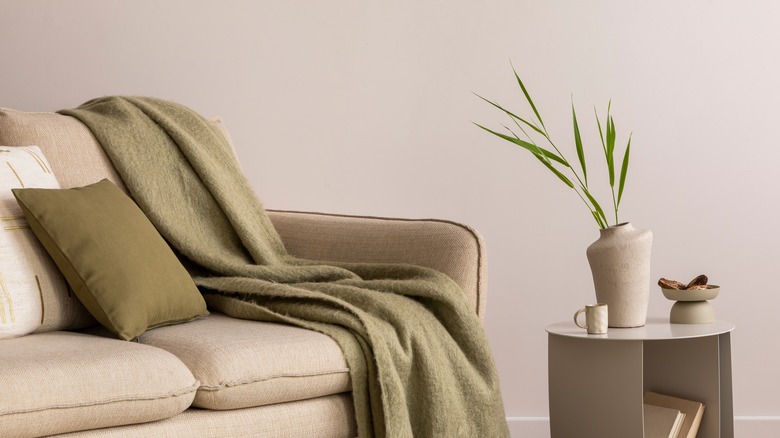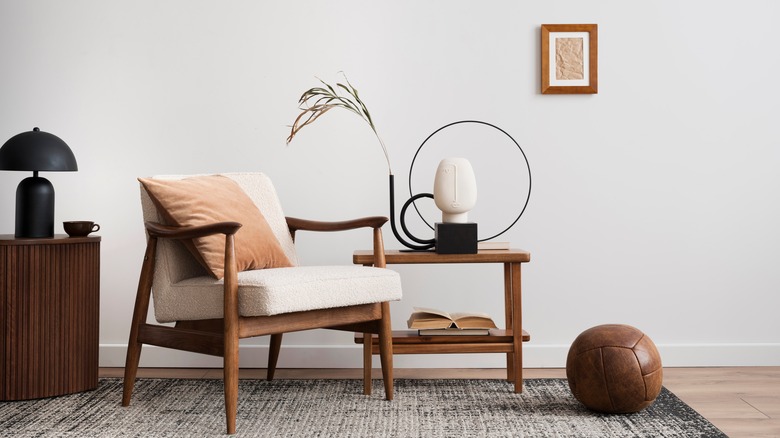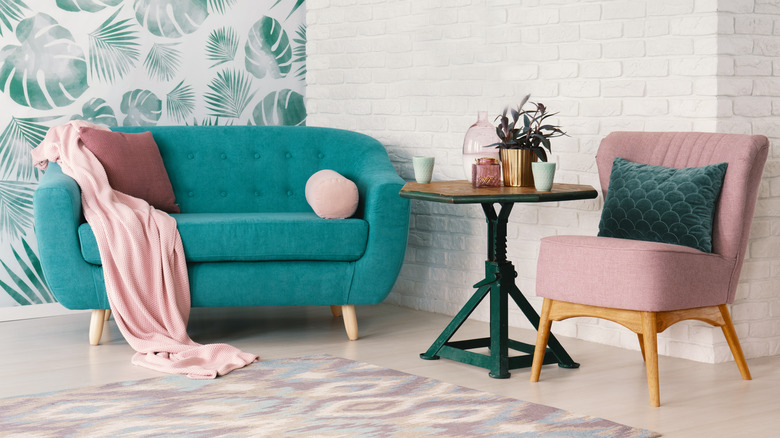Why You Should Follow The Rule Of Three When Decorating An End Table
As you can probably guess, the "rule of three" in interior design means to use just three items when styling a vignette. There are a few reasons why this rule is often followed, beginning with the fact that groups of odd numbers look more pleasing to the eye than even arrangements. This rule has roots in feng shui, as the number three creates balance, order, and positive energy. Practically, it also makes it much easier to style spaces in your home, as you simply need to find three items and arrange them together.
One place to utilize this rule is on the surface of an end table, as this will simplify the styling process and guarantee that your setup looks orderly and appealing. Before choosing the right decorative items, consider how large the surface is, which will help you determine what size they should be. Second, think about the table's function; for instance, if it's in a reading nook, you'll probably need a lamp. Finally, take where the end table is located into consideration, as you don't want to place delicate pieces in a frequently used area where they may break.
How to choose the right three items
When choosing three items for your end table, create variety and interest with varying heights, colors, and textures. You want them to create a triangle to encourage your gaze to look at all three items. You can choose pieces of various heights, but many choose to allow one item to stand out by arranging it with significantly smaller accent pieces. Even if you want a primarily neutral design, including a pop of color is also important, which can be accomplished through greenery, florals, or knick-knacks. Finally, textures can be brought in by mixing materials, like a wooden picture frame and a ceramic vase.
The first item you choose should be your focal point or your largest item. Then, you can build around that with smaller pieces that complement it. An example is choosing the right lamp, then deciding upon a medium-sized vase and finishing the vignette with a string of beads. Another grouping you could create is a stack of books, upon which you can place a small plant and coasters. Allow yourself to play around with different arrangements until you find something you really enjoy.
Scenarios where the rule of three can be broken
While the rule of three is a great starting point for decorating an end table, there are a few ways you could slightly break this rule. For instance, if you want to use a grouping of items, the whole collection can be considered one item. This includes things like stacked books or a few similar knick-knacks. Another scenario where this rule could be broken is when three items cannot properly fill a large table. In this case, you could include additional items, but it's important to still stick with odd numbers like five or seven.
Further, some designers don't include primarily functional items like lamps and coasters in their group of three. If you want to do this, find three items to arrange around or next to these pieces. Another item some may not consider as one of their group of three is a grounding piece like a tray or a stack of books. To determine whether or not this piece should be counted as one of your three items, consider how much of a statement it makes. Neutral books and trays may blend into the surface of the end table, while bolder items may be louder and could be considered part of the grouping.



